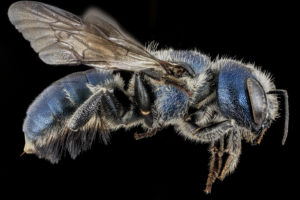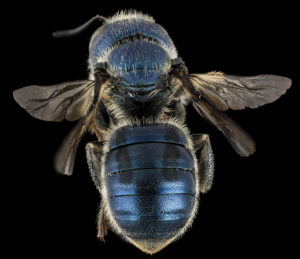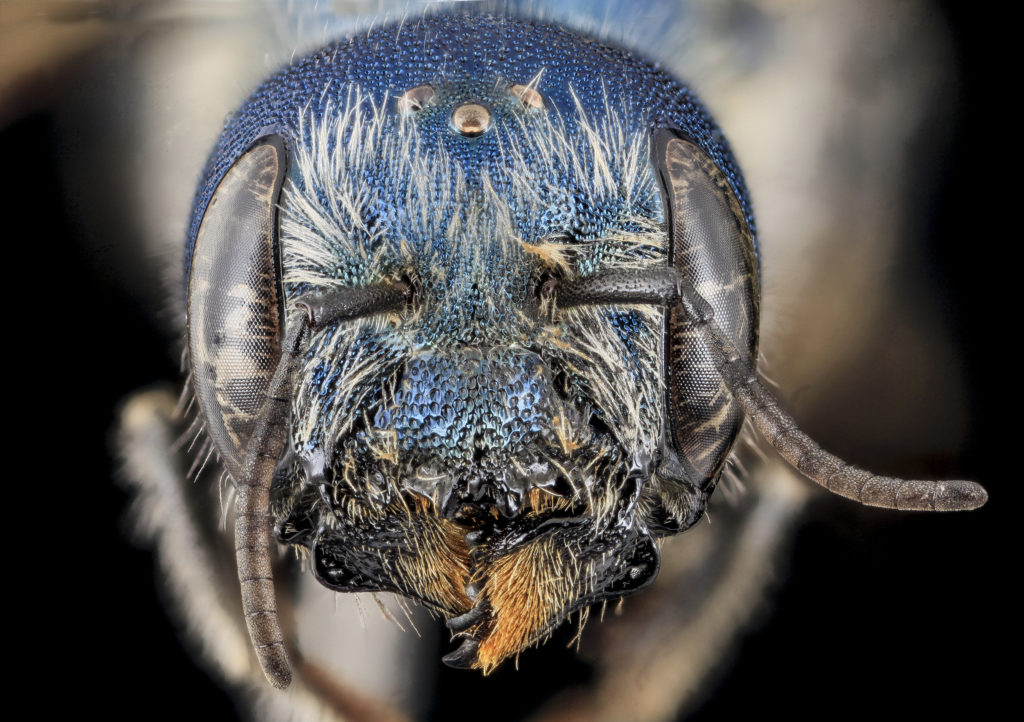Identification

Osmia texana (Photo Credit: USGS Bee Inventory and Monitoring Lab)
Mason bees are major pollinators of orchards and some commercial crops, but you can sometimes find them buzzing around a backyard garden. They are about a ½ inch in length and can vary in coloration across species. Some mason bees will be metallic green, while others are dark blue or black. These bees tend to favor tube-shaped or asymmetrical flowers such as plants from the mint and legume families. One mason bee in particular, the blue orchard bee, is a popular commercial pollinator. This species of bee is more efficient than honey bees when pollinating certain orchard crops since they are able to visit more flowers and therefore can transfer pollen more effectively.

Osmia texana (Photo Credit: USGS Bee Inventory and Monitoring Lab)
Biology
As the name may suggest, mason bees use mud to construct their nests in preexisting cavities. Some popular nest locations are hollow stems, cracks in between stones, and cavities in wood. When mason bees emerge from their nest, the females will mate and then will search for a new nesting site soon after. She will collect pollen and nectar to create a mixture that is used as provisions for developing brood. The foundress bee will place the pollen provision at the back of nest, lay an egg, and the close the cell with a thing wall of mud. She will repeat this process until the entire tunnel is filled. The eggs that are laid at the back of the nest will develop into female bees, while the eggs near the front of the nest will be males. When a mason bee has reached the adult stage, it will chew its way to the nest entrance, crossing through the other brood cells that are in its way. If a nest site is small, the foundress female will still use the cavity to lay her eggs, but she will look for other nesting sites to use to rear her progeny.

Osmia texana (Photo credit: USGS Bee Inventory and Monitoring Lab)
If you are interested in providing a nesting site for mason bees, there are instructions available online for making your own nest structure, or there are also pre-made nest sites that are available for purchase.

